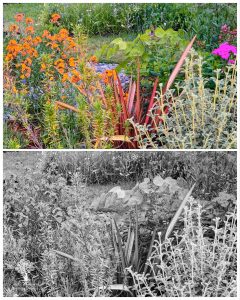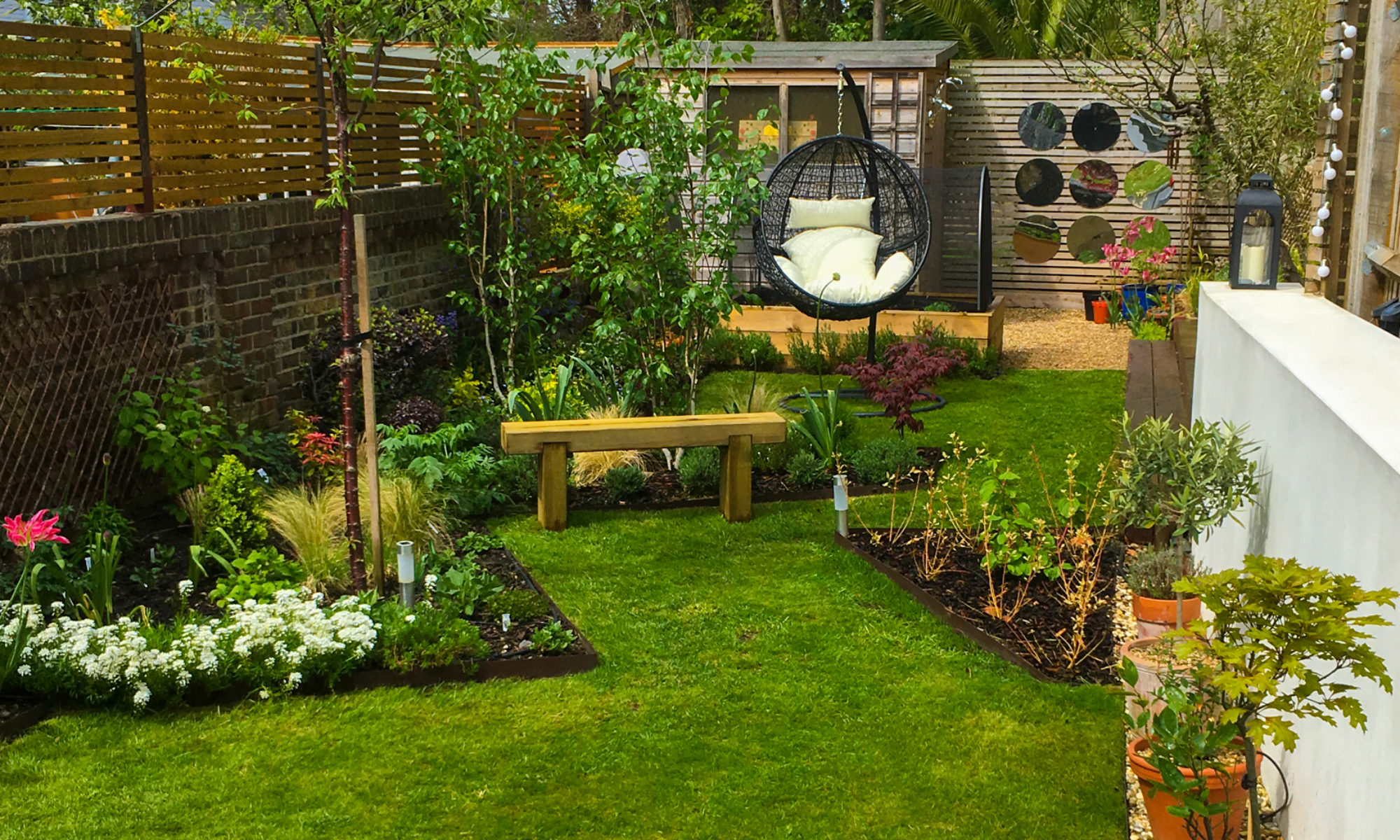Have you ever wondered why you like the look of one border more than another? Both are equally colorful, both have exciting plants, but one is just so much more pleasing to look at. Why is that? In a workshop a couple of years ago, Noel Kingsbury and Piet Oudolf taught me about their rules for successful (read: stunning) perennial planting combinations. You may be surprised to learn that the secret is not so much color, but shape.

How does the “beauty test” work? From Piet Oudolf I learned this neat trick: take a photo of a planting you like. Then make that photo black&white. Is the planting still as attractive as it was in color? It should be. If it isn’t, there may be too much emphasis on color combinations, and not enough on plant shapes and textures. You can apply this test to plant arrangements directly in the nursery, before you buy.
Why is shape so important? Color, especially flower color, is fleeting. Plant shapes last longer, in the case of evergreens throughout the seasons. And let’s not forget the seed heads which can give a perennial a whole new seasonal interest. Take phlomis or eryngium, for example, which I think are at their most impressive in late summer. That’s why shape should come before color when putting together a plant scheme, no matter how colorful you want your palette to be. Which is not to say color is not important, of course, and I will talk about color in another post.
Here is a beauty test example: look at the black&white image I have included in this post. You can see that the combination of evergreens on the right hand side — ballota, phormium and epimedium — has distinctive, contrasting shapes that create visual interest. Meanwhile the plants over on the left all seem to blur into one. I could add a more contrasting plant there, perhaps in the shape of an agapanthus, or a compact evergreen shrub, or simply another phormium.
Have fun making your garden photos black&white and discovering shapes you may not have noticed before!
